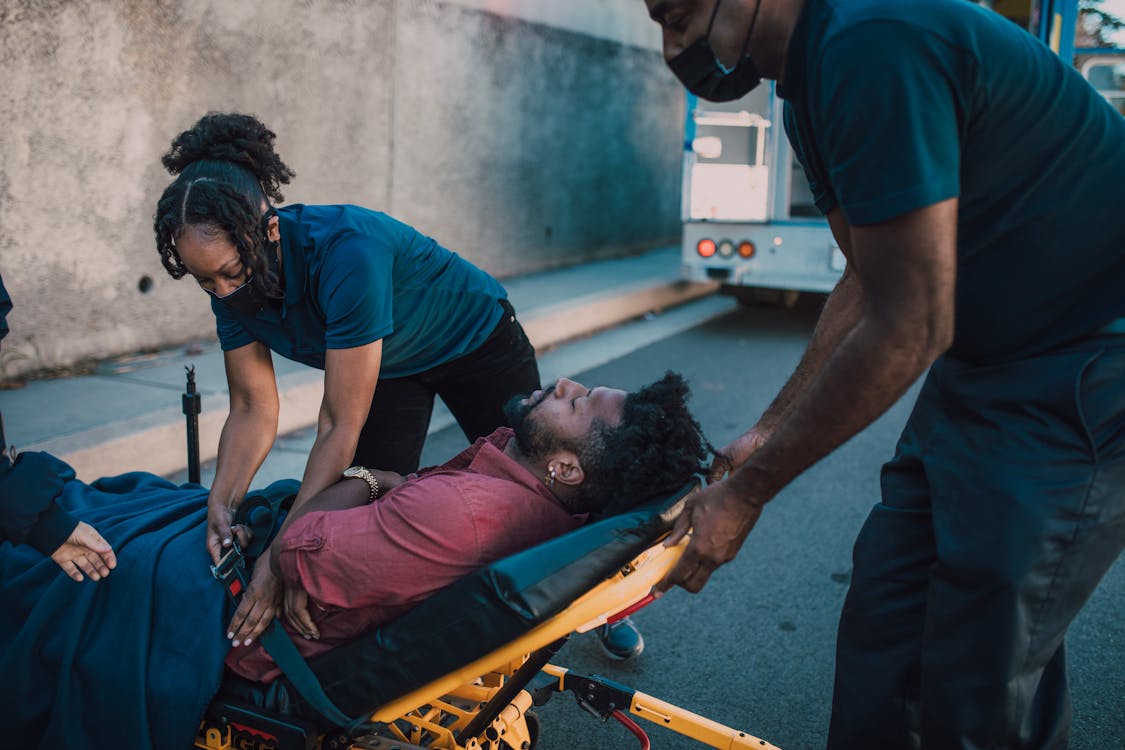Basic first aid and emergency response

As a caregiver, having knowledge of basic first aid and emergency response is vital for providing immediate assistance in case of injuries or emergencies. While professional medical help should always be sought, understanding these principles allows you to stabilize the situation and provide initial care. Here are some key areas to focus on:
- Assess the Situation: Before taking action, ensure the safety of yourself, the individual you are caring for, and others involved. Assess the scene for any potential hazards or dangers.
- Call for Help: If the situation requires immediate medical attention, call emergency services (e.g., 911) to report the incident and provide relevant information, such as the location, nature of the emergency, and any known injuries or conditions.
- CPR (Cardiopulmonary Resuscitation): If someone is unconscious and not breathing or their breathing is irregular, knowledge of CPR can be life-saving. The basic steps include checking for responsiveness, performing chest compressions and rescue breaths, and continuing until professional help arrives.
- Choking: If an individual is choking and unable to breathe or speak, they may need assistance. Understand the Heimlich maneuver (abdominal thrusts) for adults and children, as well as appropriate techniques for infants, to help clear the airway obstruction.
- Bleeding and Wound Care: Learn how to control bleeding by applying direct pressure on the wound with a clean cloth or dressing. Elevating the injured area and using pressure points can also assist in controlling bleeding. Proper wound care involves cleaning the wound, applying antiseptic, and dressing it appropriately to prevent infection.
- Burns: Immediately cool a burn with cold running water for several minutes to alleviate pain and prevent further tissue damage. Cover the burn with a clean, non-stick dressing and seek medical attention for severe burns or burns to sensitive areas.
- Fractures and Sprains: If a person sustains a fracture or sprain, immobilize the injured area by using a splint or sling to reduce movement and provide support. Apply ice packs wrapped in a cloth to reduce swelling, and seek medical assistance for further evaluation and treatment.
- Allergic Reactions: Recognize the signs of severe allergic reactions (anaphylaxis), such as difficulty breathing, swelling of the face or throat, and hives. If the individual has a known severe allergy, administer an epinephrine auto-injector if available, and call for emergency medical help.
- Seizures: During a seizure, ensure the person’s safety by removing any nearby objects that may cause harm. Cushion their head, and do not restrain them. Stay with them until the seizure subsides, and call for medical assistance if it lasts longer than usual or if it is their first seizure.
- Documentation: Maintain accurate records of any injuries, incidents, or emergencies that occur while providing care. Note the date, time, nature of the incident, actions taken, and any changes in the individual’s condition. These records are valuable for medical professionals and for tracking the individual’s progress.
Remember, it is essential to regularly refresh your knowledge of first aid and emergency response techniques through certified training programs or courses. These provide hands-on practice and updated information. Additionally, ensure that you have access to essential first aid supplies and emergency contact information in your caregiving environment.
While first aid knowledge is valuable, always prioritize the safety and well-being of the individual by seeking professional medical attention promptly.
